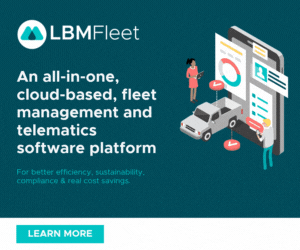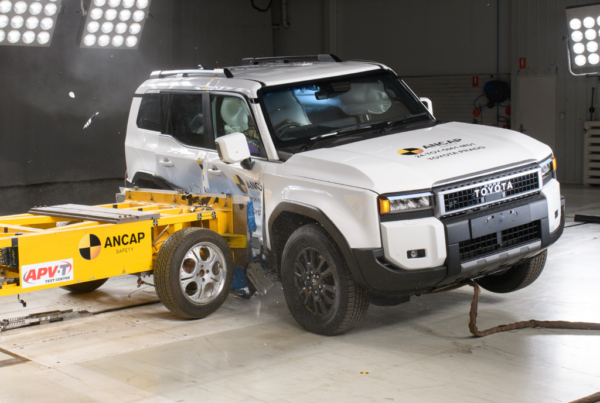As a fleet manager, ensuring that your staff have the right tools and assets for the job is critical. Whether purchased or leased, the cost of acquiring vehicles and running a fleet is a significant business expense. That’s why fleet managers work towards optimising their fleet to align with their department’s needs and the broader business goals.
One key performance indicator is how vehicles are utilised. To achieve optimised vehicle utilisation, fleet managers must ensure that their drivers have access to the right vehicle, at the right location/depot, at the right time, and that every vehicle is running the expected number of productive kilometres and hours.
Although it may be challenging to achieve 100 per cent vehicle utilisation in a working day, there are sophisticated fleet management solutions available that provide accurate data in real-time to streamline the process. Armed with data, you can make informed decisions based on data specific to your company’s needs.
Here are several approaches experienced fleet managers use to meet their fleet optimisation goals. With the right fleet management software in place, the tools you need to reduce costs and boost productivity are at your fingertips.

Right-sizing your fleet is a proactive and strategic approach that focuses on determining the right number of vehicles and drivers to meet demand. It ensures minimal vehicles sit idle while maximising productivity. If your fleet can meet the variations in supply and demand with the existing number of assets used to their full capacity, then you have ‘right-sized’ your fleet. The key to right-sizing your fleet is having the right tools for continuous analysis and assessment.
Fleet Management Software (FMS) provides an overview of your entire fleet and provides the data points that help you understand the intricate daily workings of your fleet.
Get a clear sense of optimal fleet size for your organisation with:
- Vehicle usage patterns
- Variable supply and demand trends
- Vehicle type by project and use case
- Vehicle running hours and kilometres
- Fuel consumption
- And more
Having detailed vehicle utilisation reports allows you to determine if you need to procure more vehicles to increase revenue or dispose of some to right-size your fleet and reduce cost.

Do you understand the patterns of your fleet vehicles use, and for what purpose? Do you know which vehicles are underused or sitting idle or being used for personal purpose by staff? Fleet optimisation reports generated by fleet management software identify every vehicle’s utilisation levels, including geographic location, type, age and kilometres. Underused or overused vehicles are quickly identified and optimised accordingly.
For example, a car repair company recently discovered that some staff members were using company cars outside of usual work hours. This behaviour has severe implications for the organisation. Suppose your company vehicle is in an accident during out-of-office hours; as per law, the company is liable and has a duty of care to ensure that emergency help is made available to those riding the vehicle. Vehicle usage data enables the company to identify the drivers involved and reminds them of their company car use obligations and policy.
Fuel costs represent a significant expense for any vehicle fleet – and must be budgeted for accordingly. Unforeseen spikes in fuel prices cause a spike in expenses for Fleet Managers who need to manage and estimate fuel consumption costs across the fleet. Fleet optimisation tools automatically track and provide monthly fuel consumption trend data giving Fleet Managers accurate inputs to forecast fuel expenditure.

Fleet utilisation studies are a valuable tool for Fleet Managers to help build a business case around the procurement, disposal and leasing of vehicles. Fleet optimisation tools provide data on utilisation for the current number of vehicles versus the number of vehicles required in the future. This enables Fleet Managers to set new financial year goals accurately and calculate future Return on Investment (ROI) once the utilisation study is completed.

While it is convenient for every individual driver to have a dedicated vehicle, this approach is inefficient and expensive. If employees are given exclusive use of a vehicle, the vehicles are most likely to sit idle for a significant amount of time.
Vehicle-sharing programs are a proven, efficient way to manage and optimise fleets, with multiple employees sharing the same vehicles. Easy-to-use vehicle electronic booking systems customised to your organisation can allow employees to book a car via an app when and where they need it. This approach gives employees access to more types of vehicles that can then be charged on usage and demand.
Another inefficient fleet management practice is the use of ‘sub-fleets’ or department fleets. Once again, vehicles, when dedicated to one company department, are often underutilised. Fleet optimisation tools create greater visibility of vehicle utilisation across multiple departments so that vehicles can be shared more effectively. This approach ultimately maximises the return on fleet investment and minimises costs.
Fleet Managers can minimise maintenance and depreciation costs by promptly identifying and replacing ageing vehicles. Once the fleet replacement criteria have been established (for example, an odometer reading of 600,000 kilometres), a fleet optimisation system can accurately report those vehicles due for replacement.
Fleet optimisation reporting provided by fleet management software is a powerful tool for Fleet Managers to have in their arsenal. As part of an overall fleet management solution, it provides the data to accurately measure how your fleet is performing and pinpoint the inefficiencies. I hope these ideas provide a great starting point for your own fleet optimisation journey.
This guest post was written by Paul Sinclair – Telematics Solutions Advisor at Intelematics


















